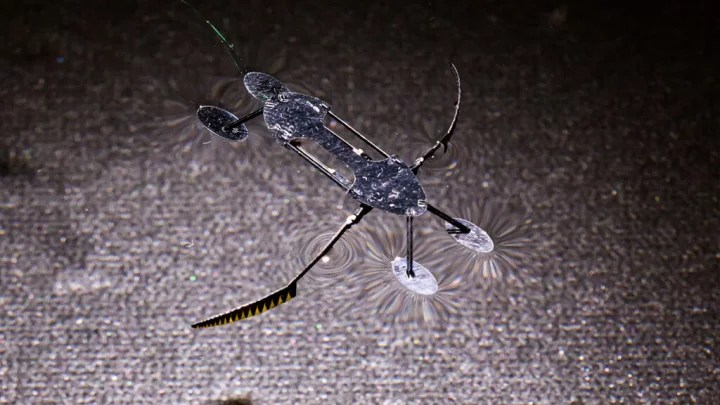Table of Contents
Description:
Scientists have claimed to have invented the world’s smallest, attack and fastest microrobot. Scientists from Washington State University in the United States have made this claim after discovering two robots resembling beetles and water bugs. This information is known from a report in Science Daily.
Thank you for reading this post, don't forget to subscribe!Tiny Marvels: Breakthrough Microrobots Unveiled for Artificial Pollination and Beyond
The researchers presented two microrobots at the International Conference of the Robotics and Automation Society of the United States Institute of Electrical and Electronics Engineering. From there, it was found that the 8 mm long micro robot weighs 55 mg. The two robots can travel a distance of 6 millimetres per second.
Scientists claim that artificial pollination, search and rescue operations, environmental monitoring, making miniature objects and robotic surgery can be done beautifully using these microrobots. Connor Trigstad, head of the research team and a PhD researcher at Washington State University’s School of Mechanical and Materials Engineering, said, ‘It is faster than other robots of this size. But it is still far behind such animals.
A type of miniature actuator provides the main power for the movement of these robots. Trygstad used a new technique to keep the weight of this particular actuator below one milligram. Trygstad claims that their actuator is the smallest ever.
Revolutionizing Microrobotics: Shape Memory Alloy Actuators Enable Unprecedented Speed and Efficiency
Washington State University School of Mechanical and Materials Engineering Associate Professor Nestor O. “The actuators are the smallest and fastest in microrobotics so far,” says Pérez-Arancibia. The actuator is made using a material called memory alloy. This actuator can change shape when heated.
This substance is called ‘shape memory’. This is because it can remember its previous shape; after heating and changing it, it will return to its original shape when the conditions return to normal. Not only that, it can operate microrobots without any kind of motor.
Image credit: Google
While actuators are used in microrobots, they are generally not used in larger robots. Because it is very slow.
Scientists say that the wings of these microrobots can move 40 times per second with the help of actuators using very little electricity. Preliminary tests have shown that the micro-robot can carry 150 times its weight.
Summary:
In the realm of robotics, scientists at Washington State University have marked a historic achievement with the creation of the world’s smallest, lightest, and fastest microrobot. This innovative breakthrough, presented at the International Conference of the Robotics and Automation Society, opens the door to transformative applications such as artificial pollination, search and rescue missions, environmental monitoring, miniature object creation, and even precision robotic surgery.
The micro-robots, resembling beetles and water bugs, measure a mere 8 mm in length and weigh only 55 mg. Their remarkable speed, traversing 6 millimetres per second, outpaces other robots of similar size. Powered by a miniature actuator, meticulously designed to weigh less than one milligram, these microrobots represent a significant leap forward in microrobotics technology.
Associate Professor Nestor O. Pérez-Arancibia, from the School of Mechanical and Materials Engineering, emphasizes the groundbreaking nature of their creation, boasting the smallest and fastest actuators in the field. The actuator, crafted from a memory alloy, exhibits “shape memory,” allowing it to change shape when heated and subsequently revert to its original form. This remarkable capability enables the micro robots to operate without conventional motors, enhancing their efficiency.
Thumbnail credit: Google
- FASTag KYC update: Updation of KYC for FASTag before 31st January; Step-by-step Process:
- Tejas vs. Thunder: China’s “Wrestles,” JF-17 With a fighter deal with Nigeria, India’s LCA Tejas is fully engaged in backchannel diplomacy.
- Real Madrid Victory: At Las Palmas, Aurelian Tchouameni gives Real Madrid a late victory.
- Bharat Ratna: Must-know Facts and Important FAQs on the Bharat Ratna Award
- Klopp is leaving Liverpool at the end of the season
